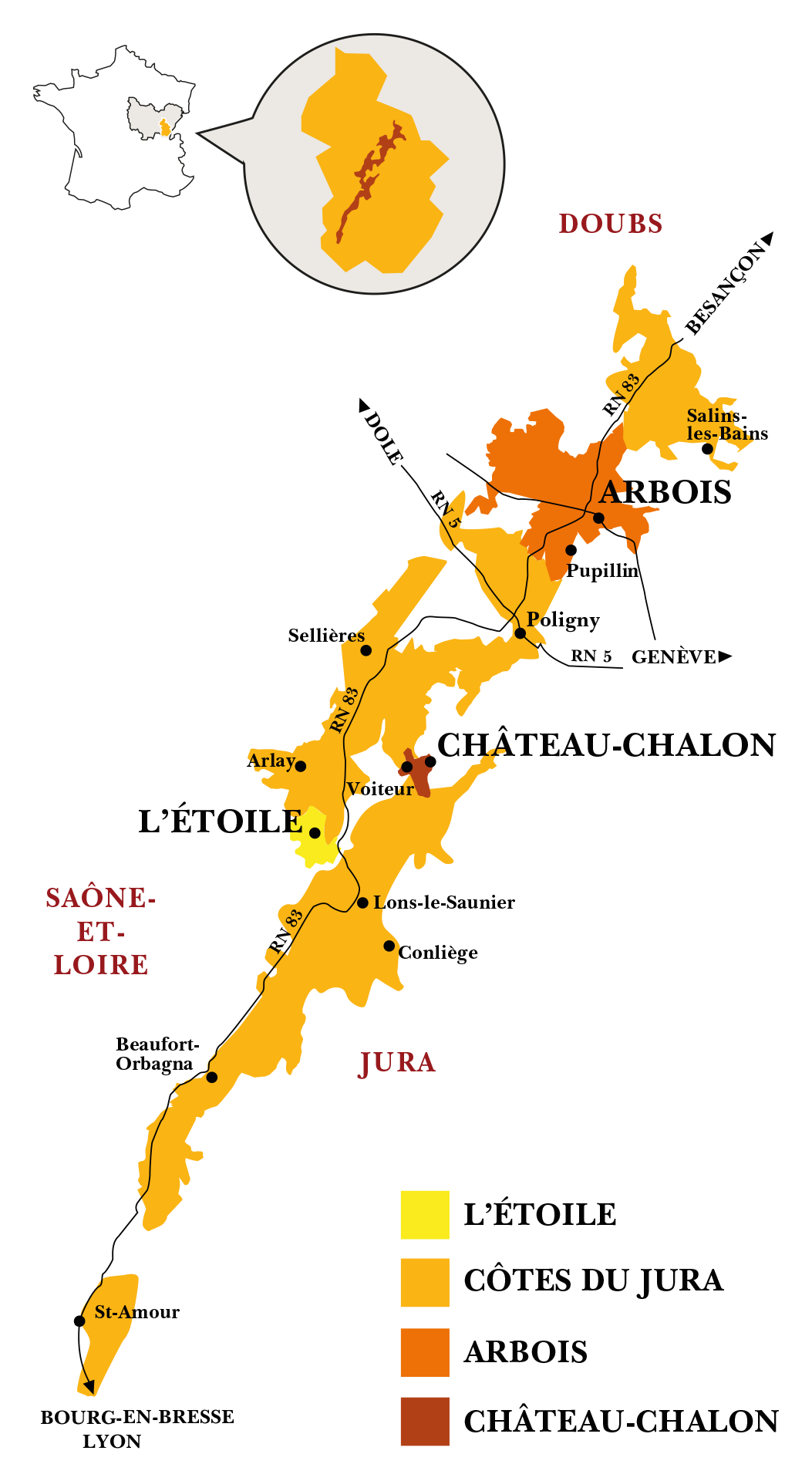ARBOIS CHARDONNAY 2022
Blanc Typé
Grape Varieties
The Chardonnay grape variety, originating from Burgundy but cultivated in the Jura since the 10th Century, has become a native of the region. Its great adaptability makes it the most prominent grape variety today, especially on limestone and light soils.
The Savagnin is typical to the Jura and flourishes on its grey marls, maturing slowly. Patient and demanding, it is the ideal grape variety for an oxydative maturing process, referred to as "sous voile". It creates white wines that are powerful with complex aromas: fresh butter, undergrowth, almonds, nuts, and spices...
Tasting notes
A typical Chardonnay from the Jura delicately blending the elegance and the finesse of the grape combined with withe flowers and white fruits aromas, delicate woody notes, subtle oxidative notes and a beautiful structure in the mouth.
Food and wine paring
Drink with cheese gougers or tart, a poultry or river fish in cream sauce, delicatessen, fish and chips, crayfish and Swiss or local cheese such as Comté.
Serving suggestions
Serve slightly fresh between 12° and 14°C (53-57°F).
Ageing potential
4 to 6 years.
Appellation
The Jura wine region is small in size but large in its remarkable diversity. It covers 80 kilometers between Burgundy and Switzerland, in the eastern France.
The Arbois AOC is the oldest and largest of the Jura's four geographic AOCs. In particular, it was France's first AOC (created in 1937). Its name originates in the Celtic words "ar" and "bois" that would mean "fertile land".
Winemaking
Reception of the grapes, vatting by gravity into a thermo-regulated tank for the fermentation. They are pressed, and musts are settling under control temperature. Then engages the fermentation maintained at low temperature (20- 22°C).
The Chardonnay was then aged in stainless steel tanks, for 8 months to aid the preservation of the wine's minerality and fruit and then blended with a part (around 9%) of Savagnin matured in oak barrel without topping up (the local winemaking technique called “sous voile”, under veil) to bring the typical Jura notes, “patina” style and structure.
Vintage : 2022
Having endured the nights at the beginning of April, we were spared from the effects of the frost. A budburst on 13 April and flowering on 23 May promised an early harvest. June saw more than 150 mm of rainfall, allowing the marl soils to build up some healthy reserves to cope with the hot summer weather.
The harvest was running from 16 August to 15 September. The grapes destined for the Crémant du Jura opened the show on 16 August, being the earliest date on record at the estate. This decision paid off as the balance of acidity was in line with what we were looking for. For our other Jura appellations, a generous rainfall on the weekend of 20 August allowed the vines to finish ripening in the best conditions.
The excellent health of the grapes allowed us to prolong the harvest until mid-September, with the opportunity to boost the maturity of the reds to their best polyphenolic potential, particularly for the Pinot Noir grapes, creating powerful, full-bodied wines. The white Chardonnays and Savagnins express floral aromas with a perfectly balanced mineral structure.






